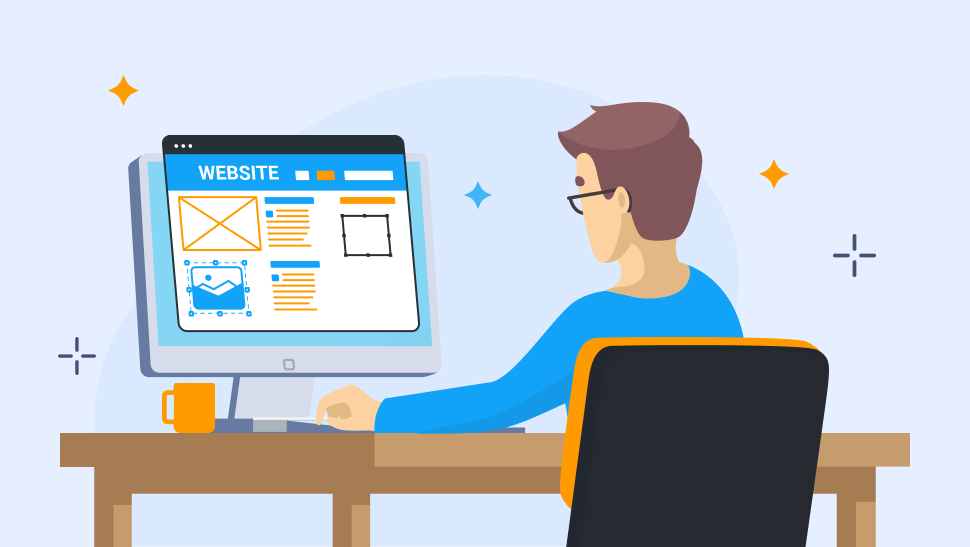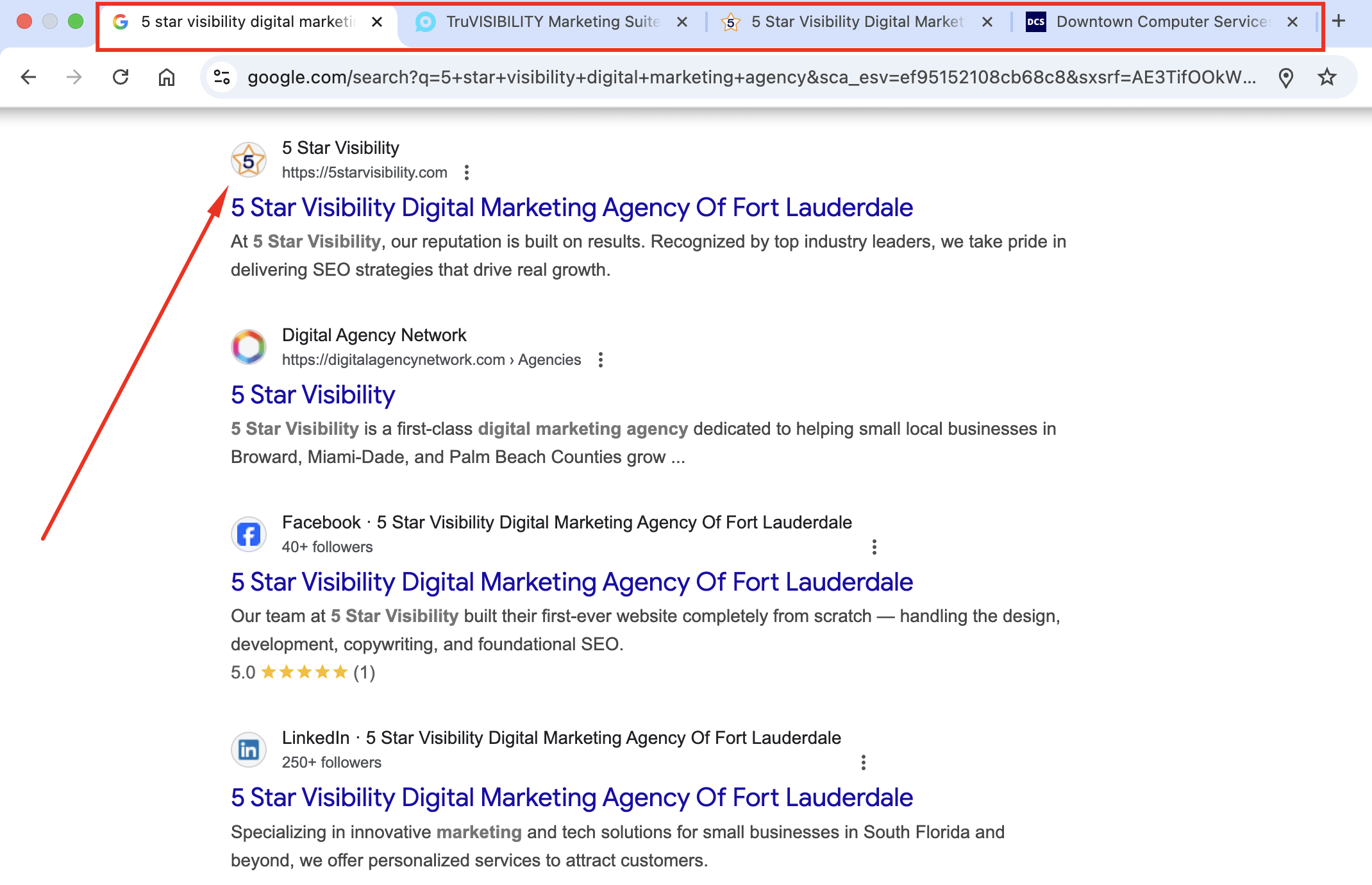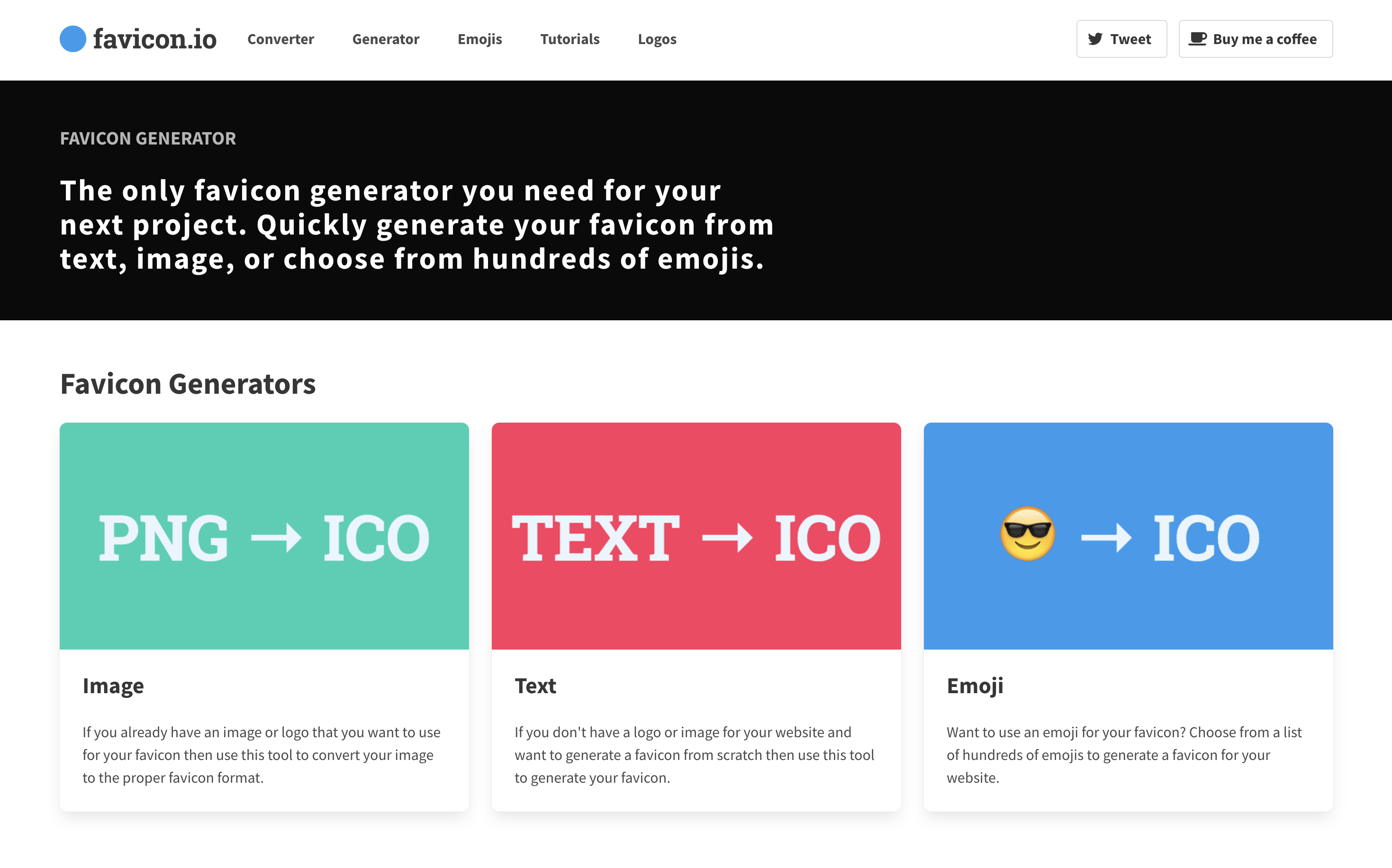
When you're building a website for your small business, you focus on the big things: the homepage design, your services, your contact form. But in the quest to launch, it’s easy to overlook the "seemingly insignificant" details.
One of the most important small details is that tiny little picture in your browser tab: the favicon.
It’s easy to miss, but its absence sends a clear message to your customers - that your site is unfinished or unprofessional. This article will cover what a favicon is, why it's critical for your business, and how to add one easily with TruVISIBILITY Sites.
Table of Contents
- What is a Favicon?
- Why This Tiny Icon Matters More Than You Think
- How to Design a Favicon That Works
- A Quick Guide to Favicon Formats
- How to Create Your Favicon File
- How to Add a Favicon in 60 Seconds
- Conclusion
What is a Favicon?
A favicon (short for "favorite icon") is a small icon that serves as a visual signature for your website. It’s your brand's tiny ambassador.
You're already familiar with its most common location - the browser tab - but it also appears in several other key places:
- Your browser's bookmarks menu
- Your "favorites" list
- Your browser's search history
- Mobile home screen shortcuts (when a user "adds to homescreen")
- On the Google search results page, right next to your website's name
Why This Tiny Icon Matters More Than You Think

It’s easy to dismiss a tiny square as a minor design element, but it has a powerful, multi-faceted job that directly impacts your brand and your customer's experience.
It Builds Brand Recognition and Trust
Your favicon is a persistent, visual anchor for your brand. When a user has 20 tabs open (and they always do), how do they find their way back to a site? They don't read the tab titles; they look for your logo. This constant reinforcement makes your brand memorable and builds subconscious user trust.
Conversely, a missing favicon (often shown as a blank page or globe icon) looks broken, rushed, or potentially insecure. It immediately signals a lack of professionalism and erodes trust before the user has even seen your content.
It's a Critical Part of the User Experience (UX)
A good favicon is a navigational tool. It visually separates your site from all the others in a crowded browser.
Think about the "cognitive load" on your visitor. In a multi-tab environment, users rely on visual cues (favicons) rather than reading text on each tab to find what they're looking for. A clear favicon reduces this mental effort, making your site "findable." A site that’s hard to find in a sea of tabs gets closed and forgotten.
It Has a Surprising Impact on Your SEO
Let's be clear: Google has stated that a favicon is not a direct ranking factor. Having one won't magically put you at #1.
However, it has a powerful indirect influence on your SEO, primarily through your Click-Through Rate (CTR).
Google now displays favicons next to your site's name in mobile and desktop search results. In a crowded results page, a distinctive, professional favicon draws the user's eye. It makes your link stand out and increases the likelihood of a click. A high CTR is a strong positive signal to Google that your page is a relevant and popular result, which can positively influence your rankings over time.
Master Another "Small Thing"
You're learning that a high-performing website is built on mastering the "small, significant details." The favicon is a critical visual one.
The text equivalent is your meta description. It's that one line of text under your Google search result that decides if people click your link or your competitor's.
Read it next: Your Website’s Meta Description: The One Line That Decides If People Click
How to Design a Favicon That Works
You don't need to be a professional designer to create an effective favicon. It's not a big deal, as long as you follow a few simple rules.
The main thing to remember is that you are designing for a tiny 16x16 pixel space. Because the space is so small, your full company logo will not work. You need to simplify.
Just follow these key rules:
Simplicity is King
A complex logo will become an unreadable blur. The best favicons are simplified "logomarks." Think of the Google "G," the Nike "swoosh," or the Netflix "N." If your logo is "Joe's Premium Plumbing," your favicon should just be a simple, bold "J" or a simple wrench icon in your brand's colors.
Forget Text
At this size, any text (other than perhaps one bold letter) is impossible to read. Don't even try to shrink your full business name.
Use Brand Colors
The favicon is a brand anchor, so it must use your brand's color palette. This creates a consistent visual identity from the search results to the browser tab.
Test on Light and Dark
Many users browse in "dark mode" now. Make sure your design is on a transparent background and looks good on both a white tab (light mode) and a black or gray tab (dark mode). A white logo on a transparent background, for example, will completely disappear in light mode.
A Quick Guide to Favicon Formats
This is where most people get stuck. Which format and size do you actually need? Here's the simple breakdown.
The Modern Choice (All You Really Need): PNG
This is the new standard and the best choice. A simple 32x32 pixel .png file is supported by all modern browsers. It's high-quality, easy to create, and supports transparency (which is crucial). Honestly, you can stop reading this list right here.
The Classic: favicon.ico
This is the original format. It's a "container" file that can hold multiple sizes (16x16, 32x32) in one. It's old but universally supported, which is why free tools still generate it for maximum compatibility.
The Future: SVG
This is a vector format, meaning it's infinitely scalable and has a tiny file size. It's perfect but not yet supported by 100% of browsers and website builders.
The "Apple Touch Icon"
To make things more complicated, iOS devices (iPhones and iPads) use a separate, higher-resolution (180x180) PNG file for when users "Add to Home Screen."
Feeling overwhelmed by all the formats? This is exactly why it's so confusing. Even though a simple .png is all you really need, you still have all these other files to think about... or do you?
How to Create Your Favicon File

Now that you know the rules for a good favicon design, it's time to actually create the files. You don't need expensive software like Photoshop. All you need is a free online tool to do the heavy lifting.
There are many tools available, but one of the most popular and easiest to use is Favicon.io. It's completely free and handles all the technical parts.
It's a great all-in-one solution because it can help you no matter what you're starting with:
- If you already have a logo, just upload your existing logo (like a .png file), and the tool will instantly convert it into all the proper favicon formats for you.
- If you need to generate one from scratch, use the tool to create a simple text-based favicon (like a bold "J" for Joe's Plumbing).
- If you want to use an emoji, choose from hundreds of emojis to create a simple and clean favicon.
No matter which option you choose, the tool will provide you with a downloadable folder containing all the file formats you'd traditionally need. You'll see PNG files in different sizes (like 16x16, 32x32, 512x512) and the classic favicon.ico. For the easiest, most universal solution, just find the largest PNG file (like 512x512.png). That high-quality image is the only one you'll need for a modern website builder.
How to Add a Favicon in 60 Seconds

In TruVISIBILITY Sites, adding your favicon is extremely easy. You don't need to worry about all the different formats, and you don't even need to use a tool like Favicon.io.
Our builder is designed to take your single design and handle all the complicated parts for you.
Here’s the entire process:
- From the Editor Menu (the button with three lines), go to Site Settings.
- You will land on the General tab.
- Find the "Favicon (Browser tab icon)" window.
- Click "Select image" or just drop your simple .png file right into the box to upload.
- Hit "Save" and publish your site.
That's it. This simple 60-second process ensures your site looks professional everywhere, right out of the box.
Conclusion
When you're building a high-performing website, the small details are the big details. A missing favicon is a missed opportunity to build your brand, improve your user experience, and increase your clicks from Google. It's the difference between an amateur-looking site and a professional, trustworthy brand.
Excited to build a professional website where you can control all these elements? With TruVISIBILITY Sites, it's easy. You can build a simple website with a blog or even a full online store, all for free. Sign up now and start building today
Want to receive more articles?
Sign-up for our weekly newsletter to receive info that will help your business grow



